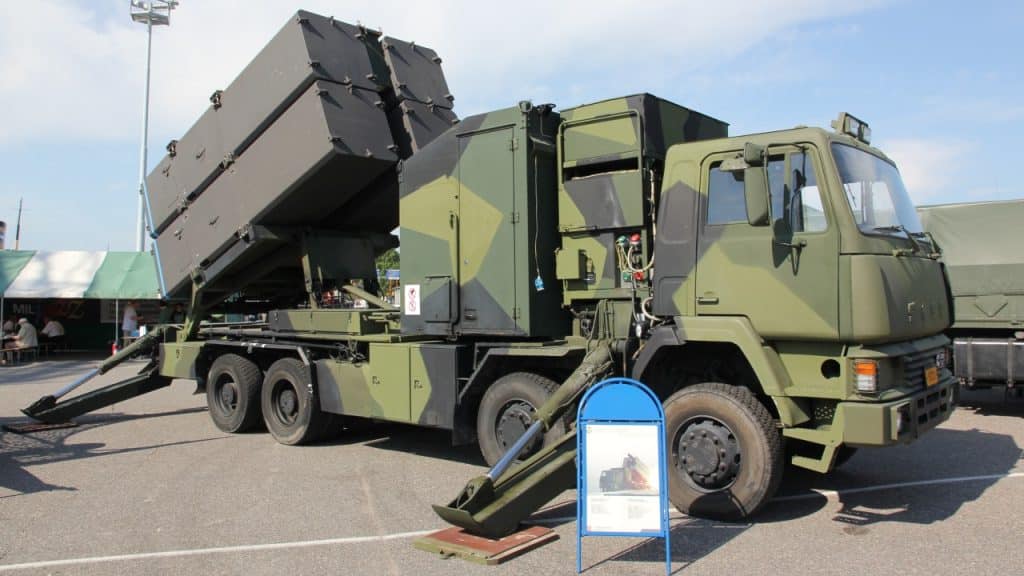The small Baltic states are identified as the first victims of potential Russian aggression against NATO. Hence the great emphasis placed by Tallinn, Riga and Vilnius on the cohesion of the alliance and, parallel to Poland, warning the West against Russian imperialism. Estonia is of particular importance due to its location on the Gulf of Finland, and thus the possibility of blocking it and separating the Baltic Fleet groups.
The situation changed significantly (extremely unfavorable for Russia) with the start of the process of admitting Sweden and Finland to NATO. The Baltic Sea will thus become the alliance’s internal lake. In an interview with the Finnish daily Iltalehti, Estonian Defense Minister Hanno Pevkur pointed out that it was possible to cut off the command and units of the Baltic Fleet in St. Petersburg from the grouping in the Kaliningrad Oblast. In fact, the enclave is becoming the only place from which Russia has free access to the Baltic Sea.
-ADVERTISEMENT-
Tallinn and Helsinki intend to strengthen this state of affairs. Defense ministers Hanno Pevkur and Kalle Laanet signed a provisional agreement on the integration of coastal defense systems.
– We have to integrate our coastal defenses – said Pevkur during his visit to Finland. – The range of the Estonian and Finnish missiles is greater than the width of the Gulf of Finland. This means that we can connect our missile systems and exchange all information with each other.
The Gulf of Finland is only 45 kilometers wide at its narrowest point, and 120 kilometers at its widest point. The Finnish MTO 85M anti-ship missiles, the RBS15 Mk III (launcher in the title image), have a range of over 200 kilometers. Last year Estonia bought an undisclosed number of Israeli Blue Spear anti-ship missiles with a range of 290 kilometers. The only concrete information is that the missiles will enter the service of the coastal defense unit subordinated to the navy. This brings immediate associations with the Polish Naval Missile Unit, which, incidentally, trained in Estonia.
After the #SpringStorm exercise was completed, the combat module of the Naval Missile Unit was transferred by sea from Estonia to Lithuania, where it participated in the exercise pk. BALTIC FORTRESS 2021.
For #MJR, this is the third allied exercise abroad this year. pic.twitter.com/CicVe54Mh0
– General Command (@DGeneralneRSZ) June 11, 2021
In the above-mentioned interview for Iltalehti, Pevkur revealed further ambitions. In his opinion, Scandinavia and the Baltic states form one airspace, which is to be particularly visible in the case of Estonia and Finland
– Finnish airspace cannot be protected if Estonia’s airspace is not protected at the same time, and vice versa – he said. – Fighters cross the 80-kilometer-wide Gulf of Finland in a matter of minutes.
This prompted the Finnish newspaper to speculate whether the US F-35A would return to Estonia. Pevkur replied vaguely that talks were underway on the scale of the US military presence in his country. Let us remind you that the Italian Lightning II participating in the Baltic Air Policing was already stationed in the Estonian Ämari base, and the American machines visited the base in February and July this year.
To sum up: the Estonian Ministry of Defense is apparently seeking to create an anti-access bubble in the Gulf of Finland, which will significantly limit the Russians’ freedom of action. This would not be the first time Estonia and Finland have had such cooperation. In the interwar period, both countries planned to build mine pens across the Gulf of Finland in the event of Soviet aggression. For this purpose, they invested, despite modest budgets, in underwater mines.
F-35A in Ämari.
(US Air Force / Staff Sgt. Megan M. Beatty)
The Germans take the stage
The A2 / AD zone can, however, be attempted to be liquidated by an attack by land forces. Such an option may be attractive to Russia, especially as Estonia is not big. This problem affects the entire military infrastructure in the country, and Tallinn is well aware of it. This is where the role of Germany begins.
Berlin’s attitude during the war and the crisis that preceded it is the subject of well-deserved criticism. This does not mean, however, that the Germans are doing nothing. As we have written many times, German aid for Ukraine and its allies is quite measurable, although it is still below expectations. The blame lies with the disastrous information policy and indecision of the government of Olaf Scholz, as well as the poor state of the Bundeswehr.
The Germans are involved in the Baltic states to such an extent that, according to the malicious agents, all operational Leopard 2 and Puma are deployed in Lithuania. Now Berlin has paid more attention to Estonia. Next month, the German-Estonian Baltic Tiger exercise is to start, devoted to the defense of critical infrastructure.
The details of the exercise remain a secret, but Defense News has managed to find some details about the German involvement. Sub-units of the Luftwaffe Objektschutzregiment der Luftwaffe “Friesland” are to appear in Ämari. As the name suggests, the regiment specializes in protecting and defending air force infrastructure. Friesland already has considerable operational experience. From its inception in 2006 until the withdrawal of Western forces last year, the regiment participated in the mission in Afghanistan. It also has missions in the Middle East against Da’esh and in Mali.
The elements of Seebataillon are to be practiced at the Miinisadam naval base. This battalion is quite a specific type of marines. The unit is intended not so much for amphibious operations as for boarding and coastal defense. It also includes a company of divers specializing in anti-mine activities. The Seebataillon was formed in 2014 in response to the Russian occupation of Crimea.
See also: Israeli observation balloon in the hands of Hamas
MKFI

